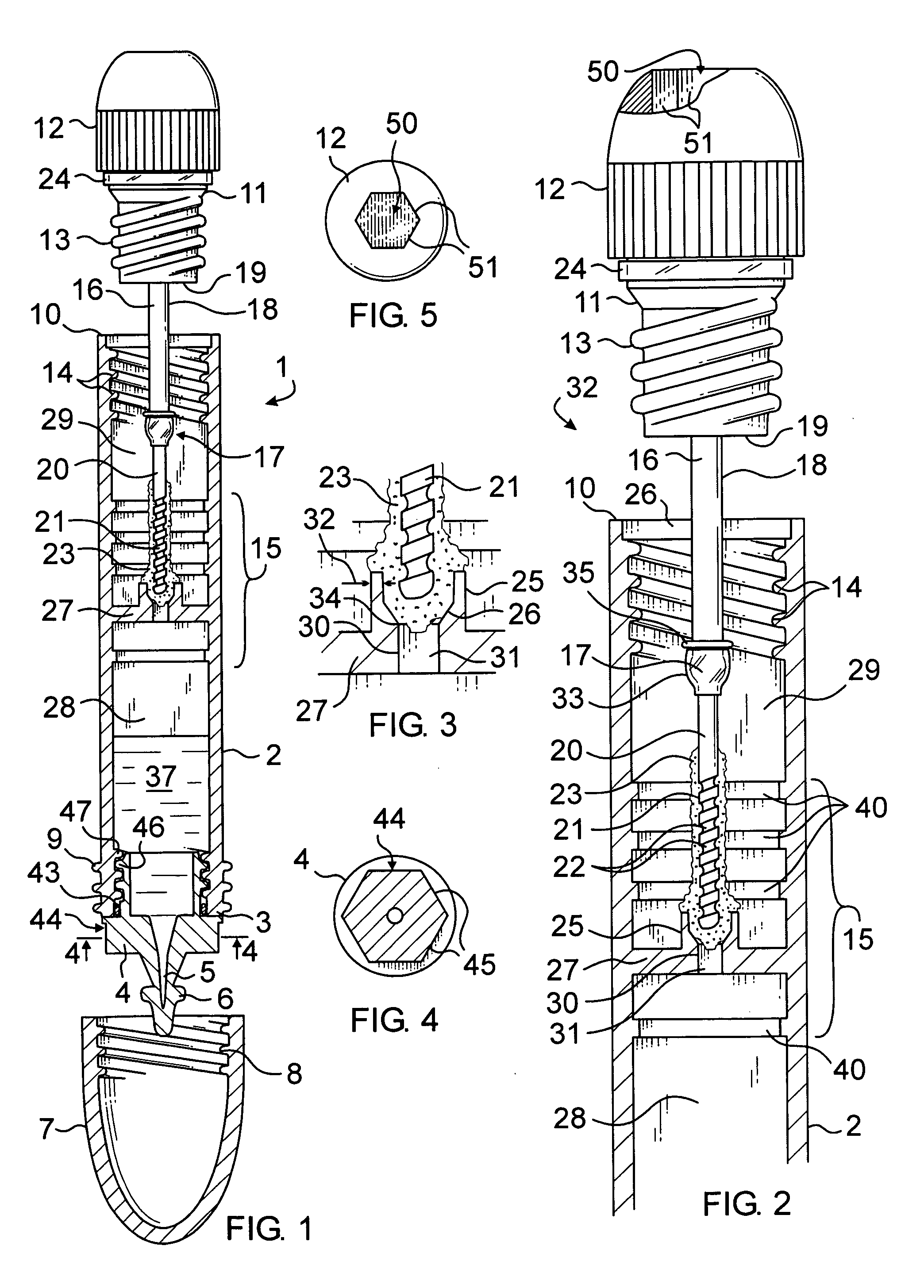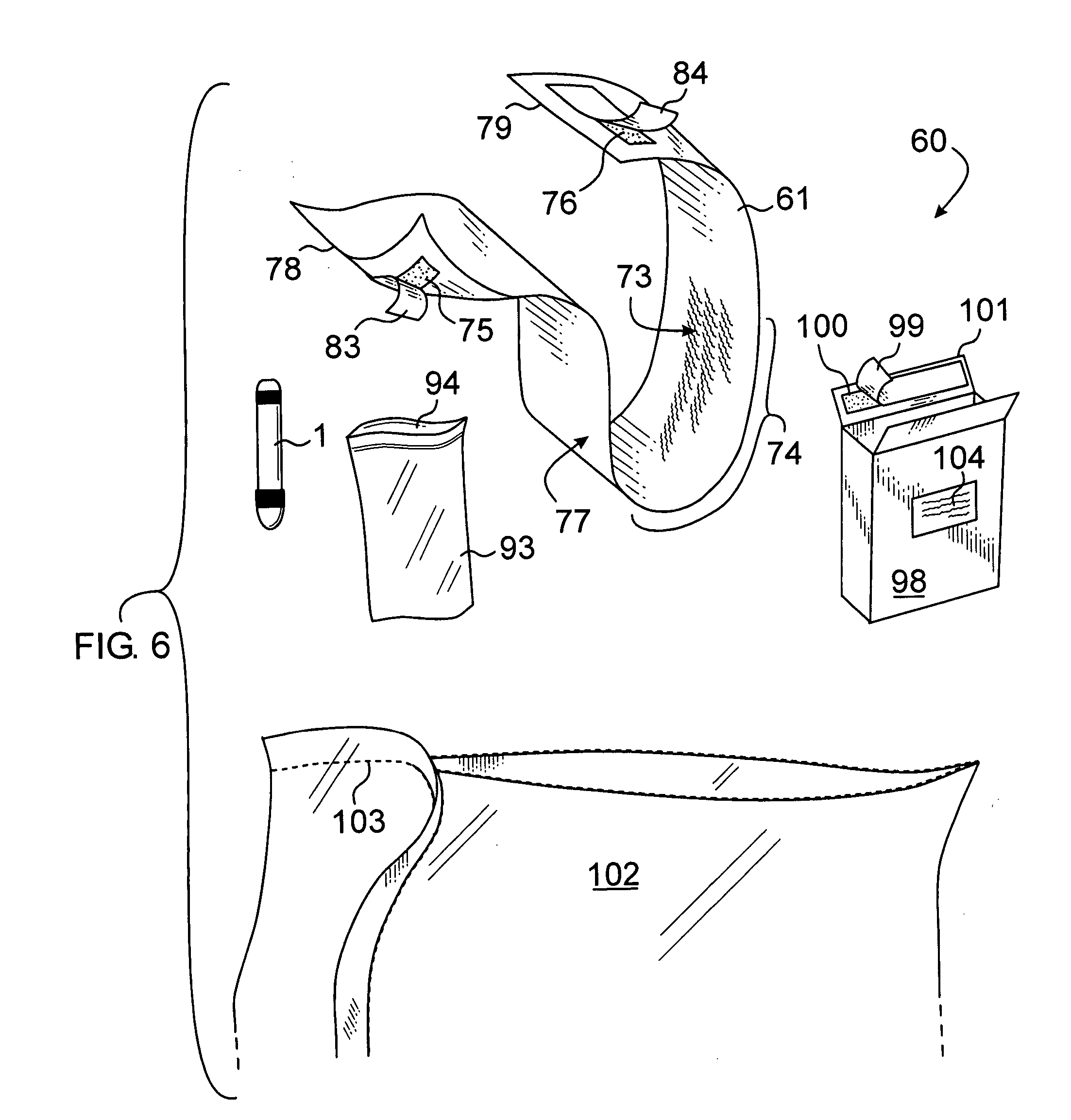Fecal specimen collection, preserving and transport device and method
a technology for preserving and transporting devices and specimens, applied in the field of preserving and transporting devices and methods for specimens, can solve the problems of cancer becoming incurable, high false positive or false negative rate, and relatively expensive colonoscopic or barium enema examinations
- Summary
- Abstract
- Description
- Claims
- Application Information
AI Technical Summary
Benefits of technology
Problems solved by technology
Method used
Image
Examples
Embodiment Construction
[0022] Referring now to the drawing, there is shown in FIGS. 1-5 a device 1 specially adapted to collect a specimen of fecal or other chemical or biological matter, store and preserve it while it is mailed or otherwise transported to a laboratory for either manual or machine analysis or both. The device comprises a tubular, preferably cylindrical, vessel 2 having a first end 3 closed by an end portion plug 4 and defining an access port 5 which is releasably sealed by a hollow nib 6 that can be easily broken to open the access port and allow convenient, eyedropper-type dispensing. A cover 7 shaped and dimensioned to enclose the plug 4 and breakable nib 6 has a threaded inner wall section 8 that cooperates with a correspondingly threaded area 9 on the outer wall of the vessel to secure the cover and thus, protect the breakable nib 6.
[0023] Preferably, the end portion plug 4 that mounts the breakable nib 6 at the first end 3 of the vessel is not molded integrally with the wall of the ...
PUM
 Login to View More
Login to View More Abstract
Description
Claims
Application Information
 Login to View More
Login to View More - R&D
- Intellectual Property
- Life Sciences
- Materials
- Tech Scout
- Unparalleled Data Quality
- Higher Quality Content
- 60% Fewer Hallucinations
Browse by: Latest US Patents, China's latest patents, Technical Efficacy Thesaurus, Application Domain, Technology Topic, Popular Technical Reports.
© 2025 PatSnap. All rights reserved.Legal|Privacy policy|Modern Slavery Act Transparency Statement|Sitemap|About US| Contact US: help@patsnap.com



